Learn a phantom-tastic physics lesson while you learn how to demonstrate static electricity!
How do you make a tissue dance? You put a little boo-gie in it!
Static electricity is electricity that doesn’t move. You’ve experienced static electricity if you’ve ever rubbed your feet on a carpet and then zapped a friend or sibling.
Let us teach you how to demonstrate static electricity, and put a little boogie in tissue paper ghosts to make them dance in this fun and simple science activity.
Materials you will need:
- Tissue
- Black marker
- Scissors
- Clear tape
- A balloon
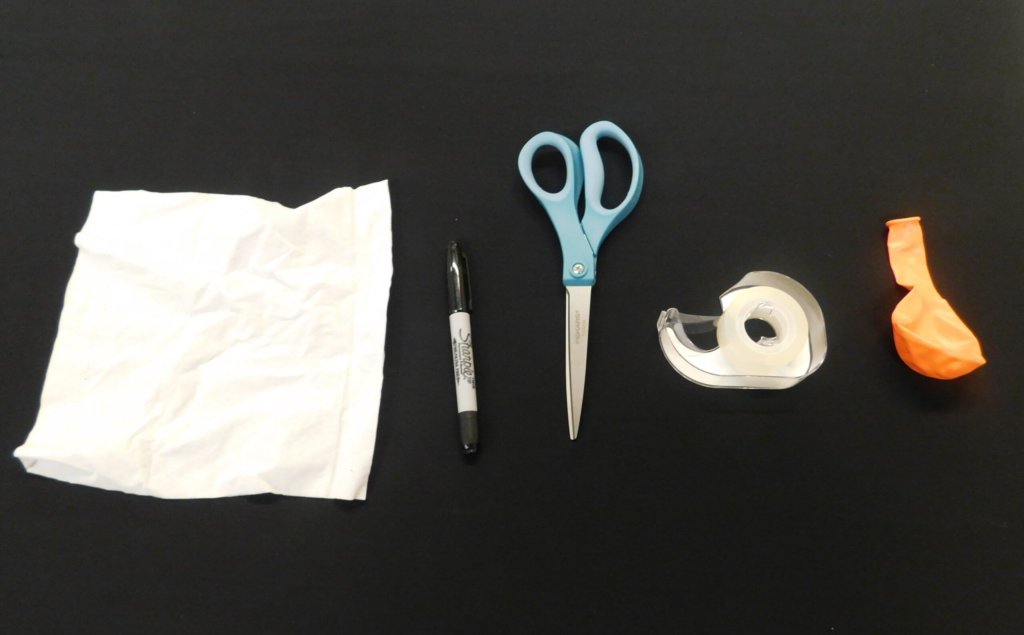
Directions:
Step 1:
Carefully separate the layers of your tissue and pull them apart. We want our tissue paper to be very thin for this activity.
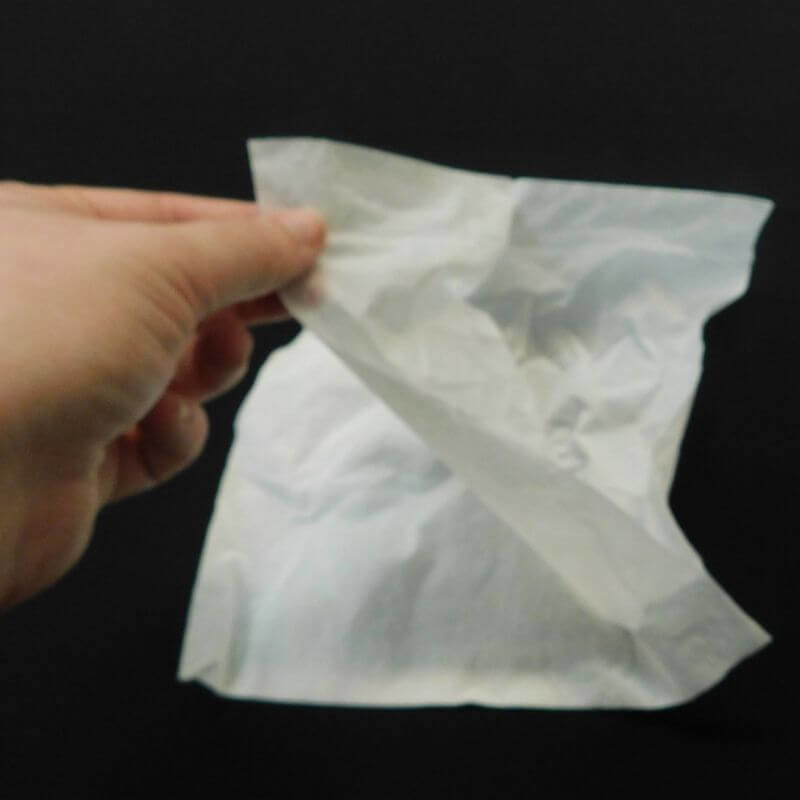
Step 2:
Draw ghosts on your tissue pieces then cut them out.
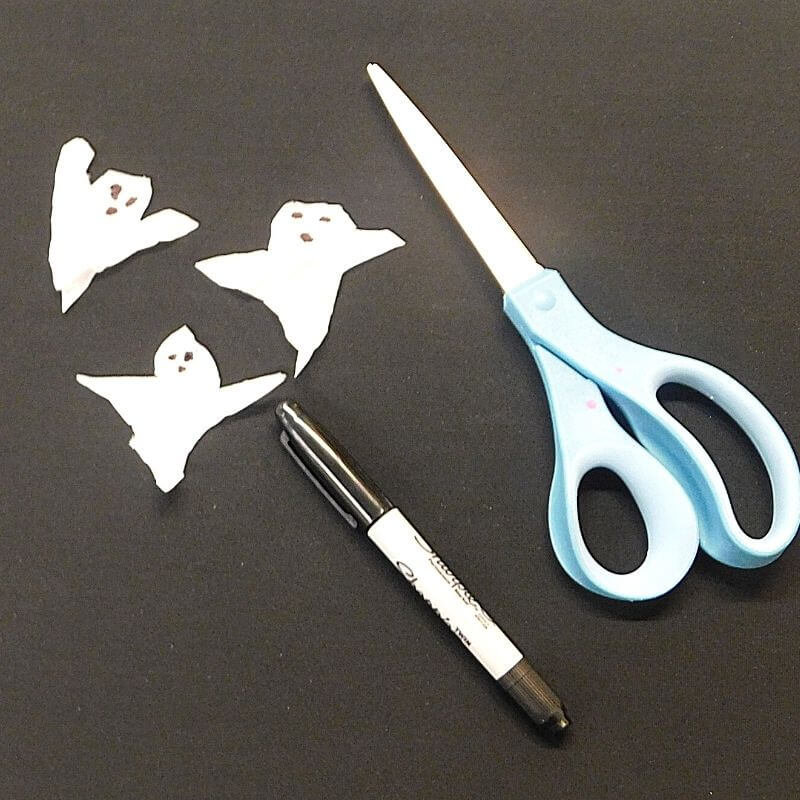
Step 3:
Tape the bottom of each ghost to your work surface with clear tape.
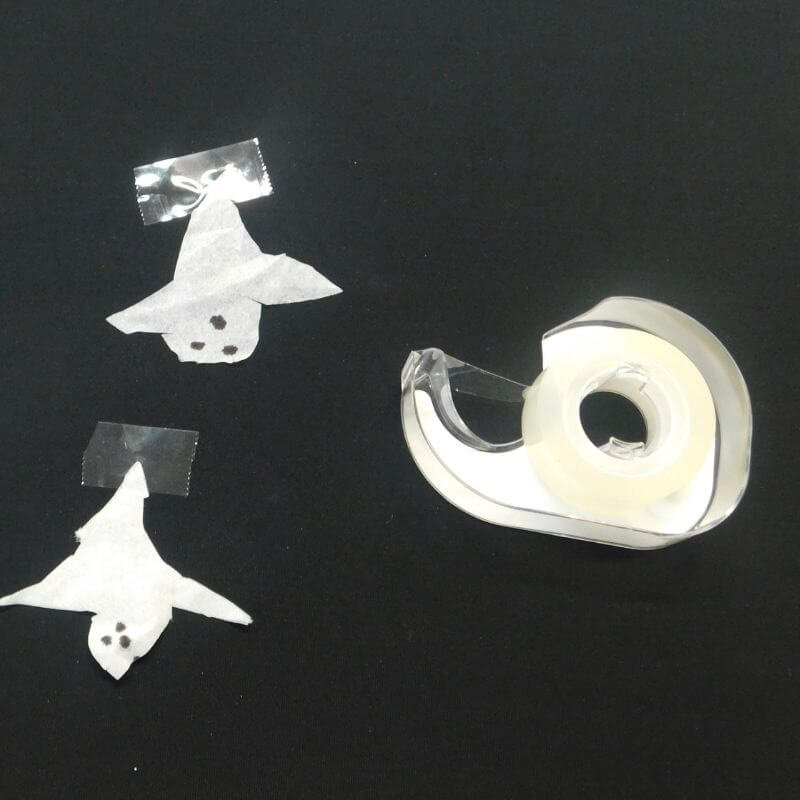
Step 4:
Blow up a balloon then rub it against your hair or against wool. A fluffy wool sweater or blanket will work!
- While you work on your experiment, ask your scientist some questions:
- Before you hold your balloon over the ghosts, ask your scientist what you think will happen. This called a hypothesis.
- What happened when you rubbed the balloon against your hair or with wool?
- What do you think would happen if we didn’t pull the tissue apart?
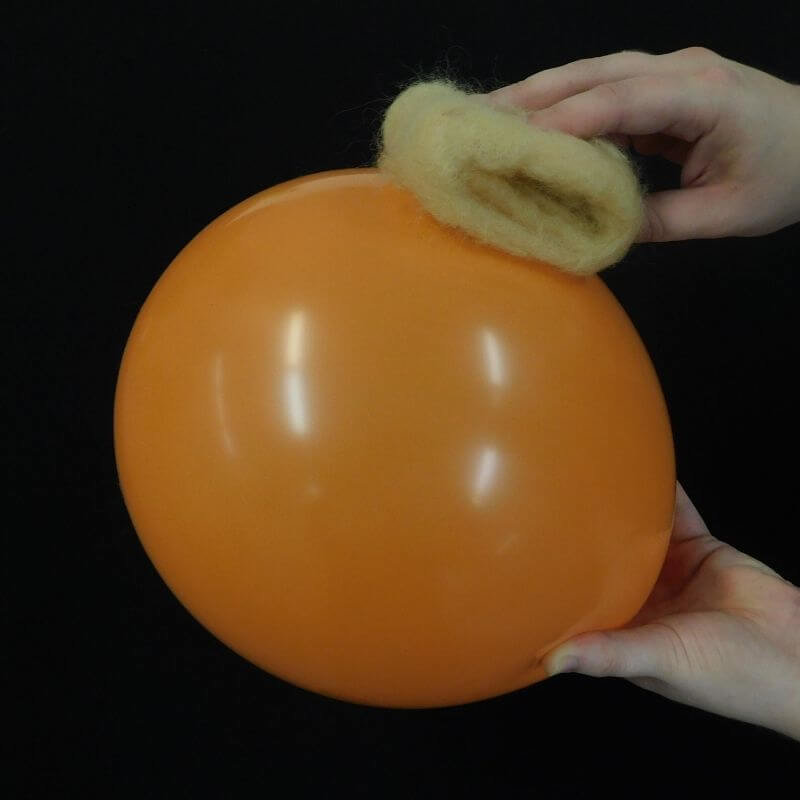
Step 5:
Hold your balloon 3-4 inches above your ghosts and move it around to make them rise up from the grave and dance!
*If nothing happens right away, try moving the balloon closer to the ghosts or rubbing the balloon again.
Take the experiment further:
- How many ghosts can you lift up at once?
- How far away can you hold the balloon from the ghosts and still make them move?
- What happens if you use different thicknesses of paper? What about different types of paper? Why do you think some types and thicknesses of paper work better than others?
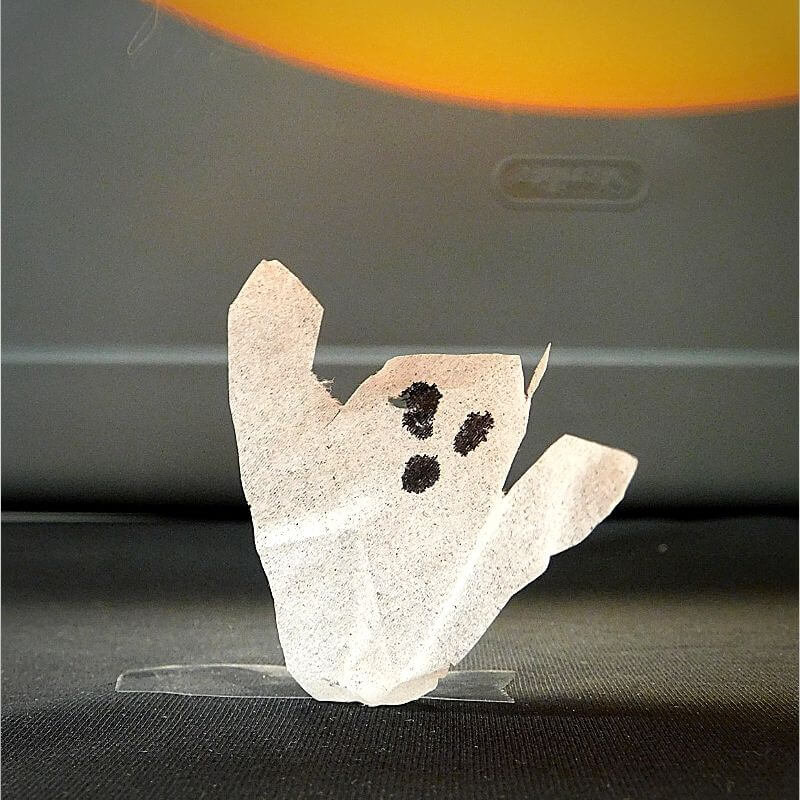
Expand on the Activity!
Learn more about static electricity
-
Electricity is a form of energy that powers our electronics like our TVs, computers, light bulbs, and more.
-
Static electricity is electricity that doesn’t move. You’ve experienced static electricity if you’ve ever rubbed your feet on a carpet and then zapped a friend or sibling, if you’ve ever zapped yourself touching a doorknob, or if you’ve ever seen lightening before.
-
Electricity is created by teeny tiny particles called protons and electrons. Protons are positively charged, while electrons are negatively charged. Just like magnets, opposites attract. So the positive protons and negative electrons attract each other!
-
When you rubbed the balloon with the cloth, you built up a negative charge on the balloon by adding electrons to it. Our little tissue paper ghosts are positive, so they were attracted to the balloon. This causes them to rise up!
Try another electrifying experiment!
DIY Blacklight: Use This Hack to Turn Any Smartphone Into a Blacklight
OSC At Home Emails
Get a round up of our latest activities and ideas delivered straight to your inbox so you don't miss a thing!
Support OSC At Home
In these ever-changing times, it is our pleasure to adapt quality Orlando Science Center experiences to engage with everyone while they are safe at home. Please consider supporting our operating fund to ensure we can continue developing resources today and well into the future. Thank you for your generosity and support!

